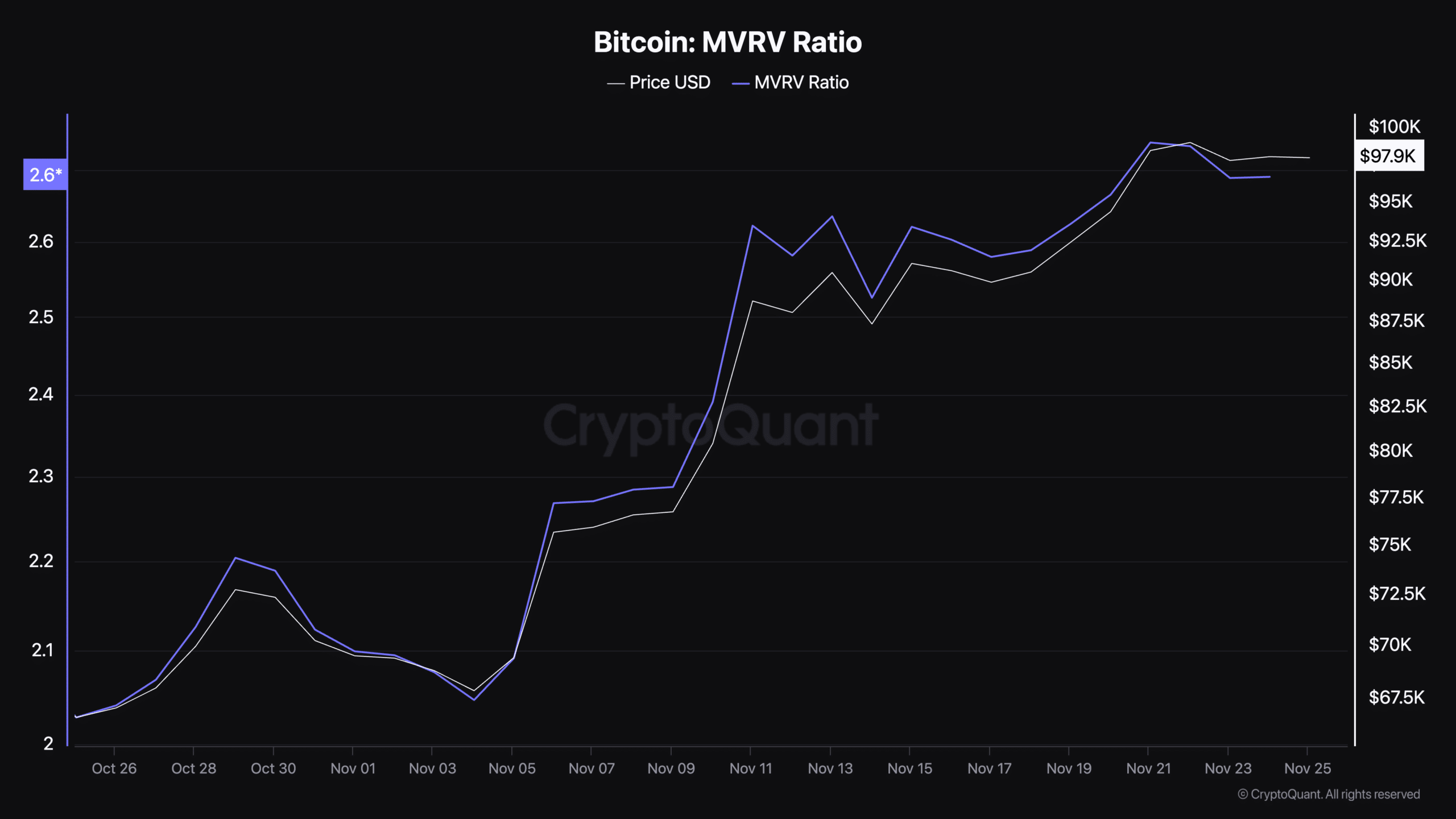-
Bitcoin approaches the $100,000 milestone, driven by stablecoin inflows and strong on-chain metrics signaling bullish momentum.
-
Consistent stablecoin inflows into exchanges are fueling Bitcoin’s price stability above $96,000.
-
Bitcoin’s MVRV ratio at 2.69 and rising open interest suggest a bullish trend with minimal risks.
Bitcoin targets the $100,000 mark as stablecoin inflows fuel a bullish trend, supported by positive on-chain metrics indicating sustained momentum.
Market fundamentals and Bitcoin’s future path
To better understand BTC’s potential trajectory, it’s important to analyze key market fundamentals. The MVRV ratio, a popular on-chain metric, provides valuable insights.
The MVRV ratio is calculated by dividing Bitcoin’s market cap by its realized cap, reflecting whether the asset is overvalued or undervalued.

Source: CryptoQuant
Historically, an MVRV ratio below 1 signals a market bottom, while values above 3.7 suggest a potential market peak. With Bitcoin’s MVRV ratio currently at 2.69, the metric indicates that the market is leaning toward optimism but remains below critical overvaluation levels.
This suggests room for further price growth while maintaining a cautious stance on overextension.
In addition to the MVRV ratio, Bitcoin’s open interest and volume metrics provide a snapshot of trader activity. Data from Coinglass reveals a 0.86% increase in Bitcoin’s open interest, bringing it to $63.16 billion.

Source: Coinglass
Similarly, the open interest volume has surged by 47.13%, reaching $81.33 billion. These figures highlight a strong market appetite for Bitcoin, with traders positioning themselves in anticipation of further price action.
Conclusion
Bitcoin’s journey towards the significant $100,000 mark showcases a fusion of market confidence and favorable metrics. As we continue to monitor the stablecoin inflows and on-chain data, the robust trading environment suggests a possible new high soon. The market’s current dynamics indicate strong sentiment, yet caution remains vital as the ecosystem adjusts to potential volatility.
